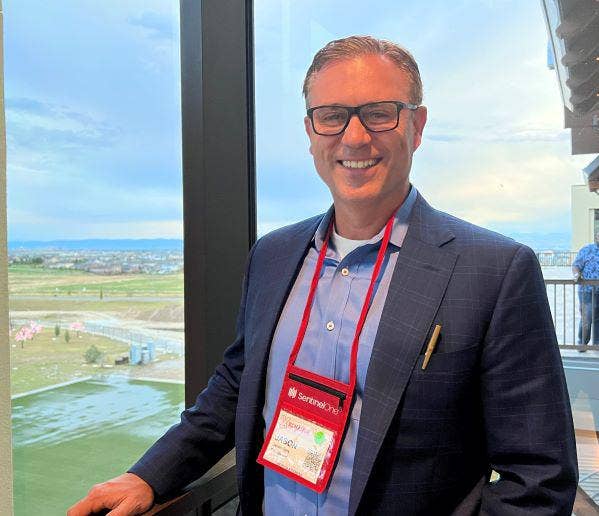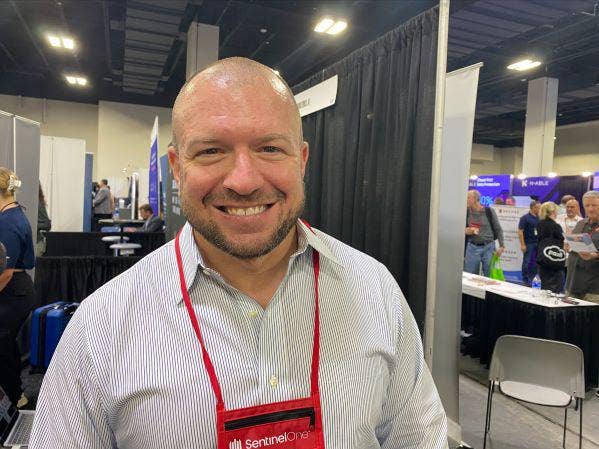MSPs Speak Out: How The Supply Chain Crisis Is Impacting Channel Business
Year-long backlogs and extensive wait times for new equipment are prompting MSPs to change the way they’re doing business.

(Image by mohamed Hassan from Pixabay)
One Major Roadblock
It’s not hyperbole to say that the global supply chain crisis brought about by the COVID-19 pandemic and resulting closures have affected nearly every industry. And the tech industry certainly isn’t immune.
Vendors and distributors don’t have the gear that channel partners and end customers need. It’s creating, in some cases, an unprecedented backlog and extremely long wait times for hardware, frustrating both partners and their clients. But if the past two-and-half years have proven anything, it’s that solution providers are flexible, agile, and ready to revamp their business models if need be, to better serve their customers.
The nimblest of partners are employing creative solutions to battle supply chain challenges, such as upgrading existing infrastructure in smaller chunks, encouraging cloud migrations, and working with their customers to figure out the 1–5-year plan, not the 30–60-day plan. And customers, MSPs say, are seeing the issue for themselves and are open to these longer-term conversations.
At CRN parent The Channel Company‘s XChange August 2022 event this week in Denver, reporters on the ground asked MSPs in attendance: How have the global supply chain challenges impacted how you’re doing business today?
Here’s what solution providers from all over the country had to say.

Matt Johnson, CEO of Baltimore-based Sorlogix
It’s driving me bonkers. I have customers who need hardware. Some vendors, they’re 12 weeks out, 16 weeks out, 20 weeks out. And if something breaks, you can’t [get] new equipment – like firewall servers and networking equipment. They say it’s getting better. The vendors say it. But I haven’t noticed it.

Gregory Hammerl, Owner of Buffalo, N.Y.-based Network Services
The supply chain situation is very difficult. I’m still waiting on products I’ve had on order since February. Customers are very frustrated. Because it’s technology, we’ve got to replace things. Now it seems like customers are more understanding. They realize maybe this particular product is going to take four to five months to show up. And other things can show up in a week. I think we’ve done a good job of sitting with our customers at least once a year to plan for the coming year.

Jason Geis, CEO and co-founder of San Jose, Calif.-based CloudWerx
The whole supply chain issue, in my humble opinion, has actually driven adoption to the cloud, right? Because when customers can’t get HP, Cisco, Dell for months—sometimes we’ve had customers that can’t get it for quarters—then what are you going to do? You’re going to spin it up in the cloud. So, the adoption to the cloud has been accelerated due to the supply chain issues, because the major cloud players have become their own contract manufacturers at this point, right? They make their own stuff.
What we see projects of customers that wanted to do their own data centers, actually haven’t had the choice due to some of the time constraints. So, it’s actually pushed them to go to the cloud much faster. When you get spin it up in minutes to hours, compared to waiting for months or quarters—it’s just driven customers to go to cloud that much faster.

Ben Gilbertson, vice president of Las Vegas-based Healthy Technology Solutions
We’ve had issues with the lack of desktops. We can’t get them. Right now, we’re having to wait, or we upgrade certain units. Like, if they have a newer processor, then we‘ll put an SSD or something like that in. But if we can’t get the machines, we don‘t really want to make the customer wait and work on a slow machine.
We have some customers on virtual desktops. But that’s just for certain use cases, such as outsourcing call center agents and stuff like that that are not US-based. Otherwise, we’ve luckily, we’ve been OK. Servers and storage, OK.

Hermann Masser, President of El Paso, Texas-based Masser Technologies
Supply chain issues have affected us tremendously. We still believe in the in the lineup and the products that we have been using, but they have been facing a lot of supply chain challenges. So, we now have backlogs of almost a year before we can get equipment.
What we‘re doing is we’re keeping an inventory of used equipment, so when one of my customers that is waiting to get the hardware, or when they have a failure and they have to replace a switch in an emergency because we cannot find switches or access points anymore, well we grab one of those old pieces of equipment and deploy it as a ‘band aid’ until we can get the equipment back. We have close to 200 access points on order right now that we‘re waiting to receive, and it’s probably going to be a year before we see them. It‘s definitely changing our ability to move fast and to sell.
There are really no security issues, but it‘s less than ideal because you’re already starting with something that has used and has been in operation for a while. So, you don‘t have the same reliability as when you grab something out of the box. Those units are out of warranty support. So, we’re basically crossing our fingers or knocking on wood it‘s not going to go bad, and they will be able to survive until we get new ones. But it’s definitely been a big challenge.

Glenn Coffield, CEO of Sanford, Fla.-based Smart Guys Computers
It’s still a problem for some but not really for others. It’s product specific. You might not be able to find the brand or the specific model you like. But that’s always been the issue. The supply chain issue depends on who you want to buy from. Because there’s been so much consolidation in distribution, you have to have accounts everywhere to buy stuff. I have to go to three different vendors to buy three parts. Procurement has become much more difficult in general.

Sam Hickler, VP of operations for Denver-based Platte River Networks
We used to require payment upfront for every deal that we did. We have relaxed that because we have to transact as fast as we can and find the inventory. It‘s put a bit of pressure on us for collections and things like that, but the idea is that as long as we create an ease of transaction for clients, we spend more time finding inventory, more time finding where this stuff is available and when we find it we have to transact as best we can once the signature comes in.
In the past, we would quote it based on price and we never worried about inventory. It was more about making sure that we got the right product. Now, if it‘s on the quote, we need to verify that it’s available once we‘re ready to purchase. If it’s not available, we have to find another solution that‘s equally priced and/or a reasonable solution. We have to buy it as fast as we can because we’re working in partnership with distribution. We are upfront with our clients about all of those challenges. We‘re not necessarily sharing the cost burden with them, but we are asking for grace in the timeline for delivery.

Mike Shook, president of Apex, N.C.-based 5S Technologies
The supply chain issues have had a major impact. We tried to take a lot of our business practices and business models and figure out how to do software as a service around those products and models. We had to move from the security purchases that are software-based. Our VAR portfolio went from 80 percent hardware [and] 20 percent software to 60 percent software and 40 percent hardware. So, it’s definitely changed the business.

Chris Phillips, Chief Customer Officer of Plainville, Conn.-based IT Heath Partners
Honestly, it’s been a challenge. We’ve learned to just be very transparent with the customer, explain to them and show them what’s going on.
I’ve got one customer who very much wanted to go all-Fortinet switch gear throughout their entire environment, but they could not get 48 PoE switches. That became a very difficult thing. Even for workstations, I have another customer who wanted to refresh that loved a particular model of HP Micro and wanted to standardize that across all of his nursing homes—but they can’t get them because it’s very difficult to find.
We’ve dealt with the supply challenges as well as, for example, other customers are like, ‘Well, if that isn’t available, I could go here and get this other product.’ OK, they might be able to get a particular computer but it’s not the one they were looking at. It’s not going to have a three-year warranty. It’s not going to have the Business Edition operating systems. That’s a lower-end solution, but certainly viable. So, we then purchased the correct operating system for their business environment and installed it. We’ve been doing that in a few instances.
Now it’s getting better, but still, who’s to say we’re not going to have another hurdle in two or three months where all the sudden chips are gone again. We never know. Supply chain has definitely been an impact for us.

Nicholas Scarsella, COO of Tampa-based Imperium Data Networks
It has changed the way we provide solutions. It’s kind of changed the solution for some. Sometimes the business need is outpacing the global supply chain and the business can’t wait those four, six , however many months. But I would say it’s catching up, it’s getting better. I would say I don’t think it’s getting any worse any longer but it’s not necessarily coming back to our pre-pandemic levels.